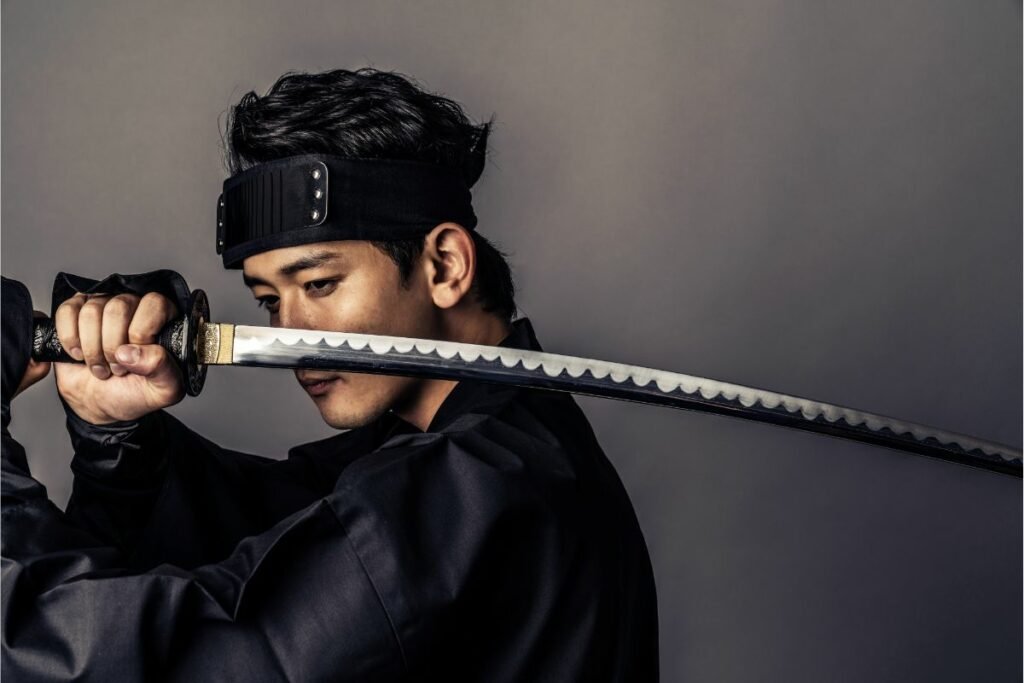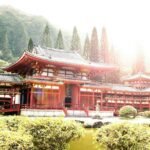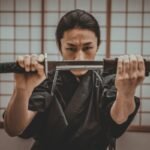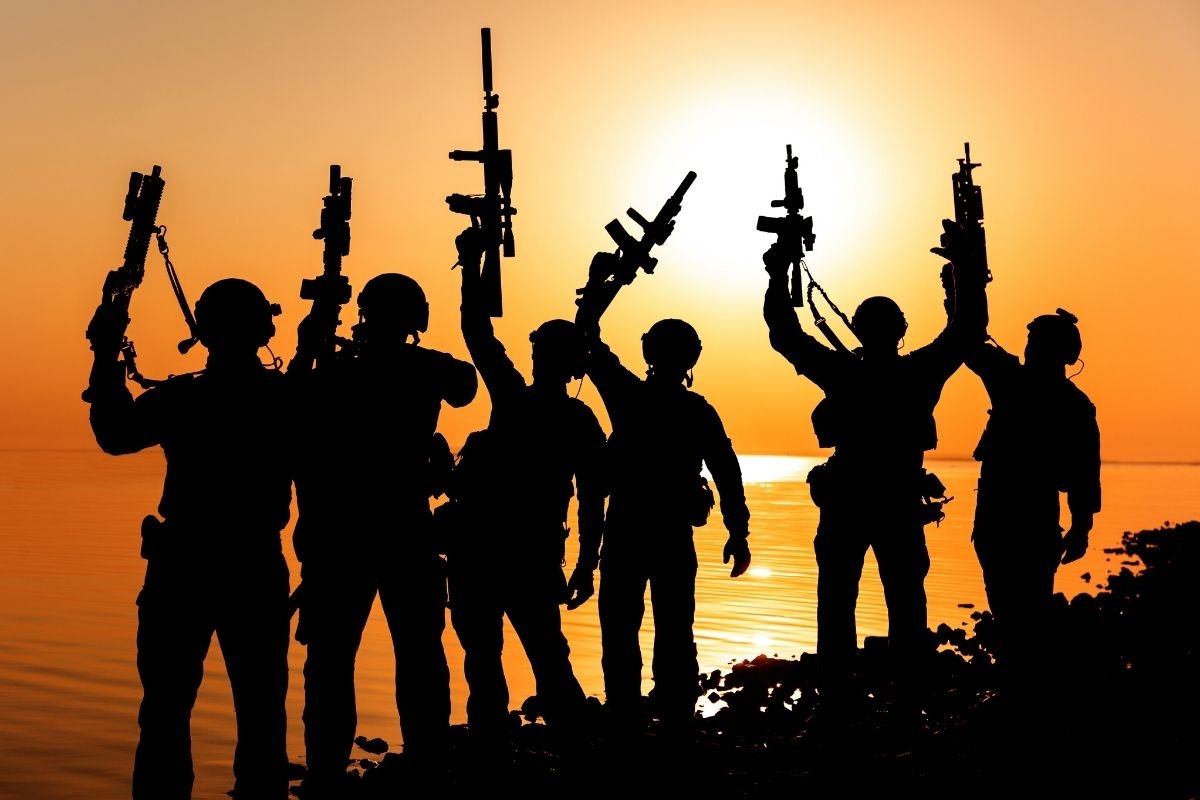When we think of a nation with a long history of warriorship and military power, Japan has to be one of the top thoughts that comes to mind.
Japan nowadays might not have the largest military in terms of size, but it has one of the biggest budgets.
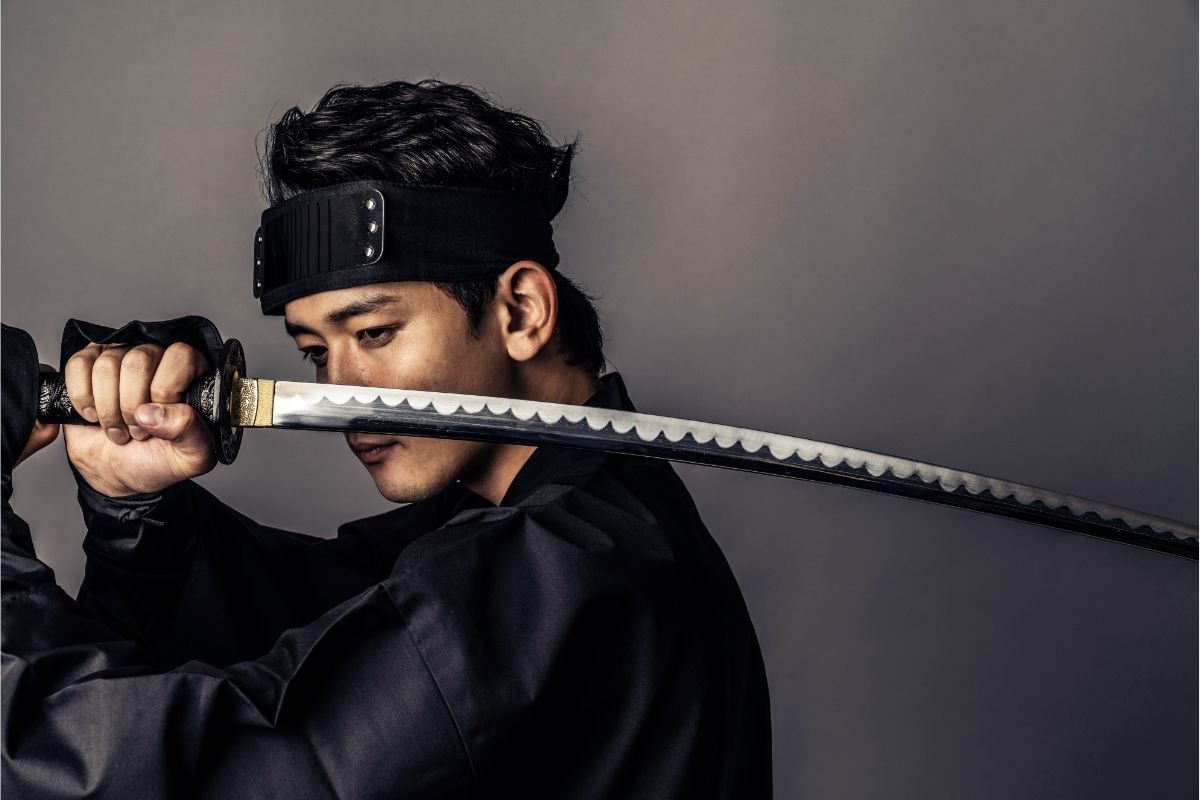
Indeed, defense has long been important to Japan. Even in ancient times, isolation was critical to foreign invaders, but so too was the construction of very high quality weaponry.
However, to really get an idea of this quality, we need to analyze some of their most famous weapons – and this is what we’ve done with this very handy guide.
We’re going to examine some famous Japanese weapons and analyze them fully.
So, if you’re wondering about some of the most famous and top quality Japanese weapons – then read on and discover the answers.
1. Samurai Swords
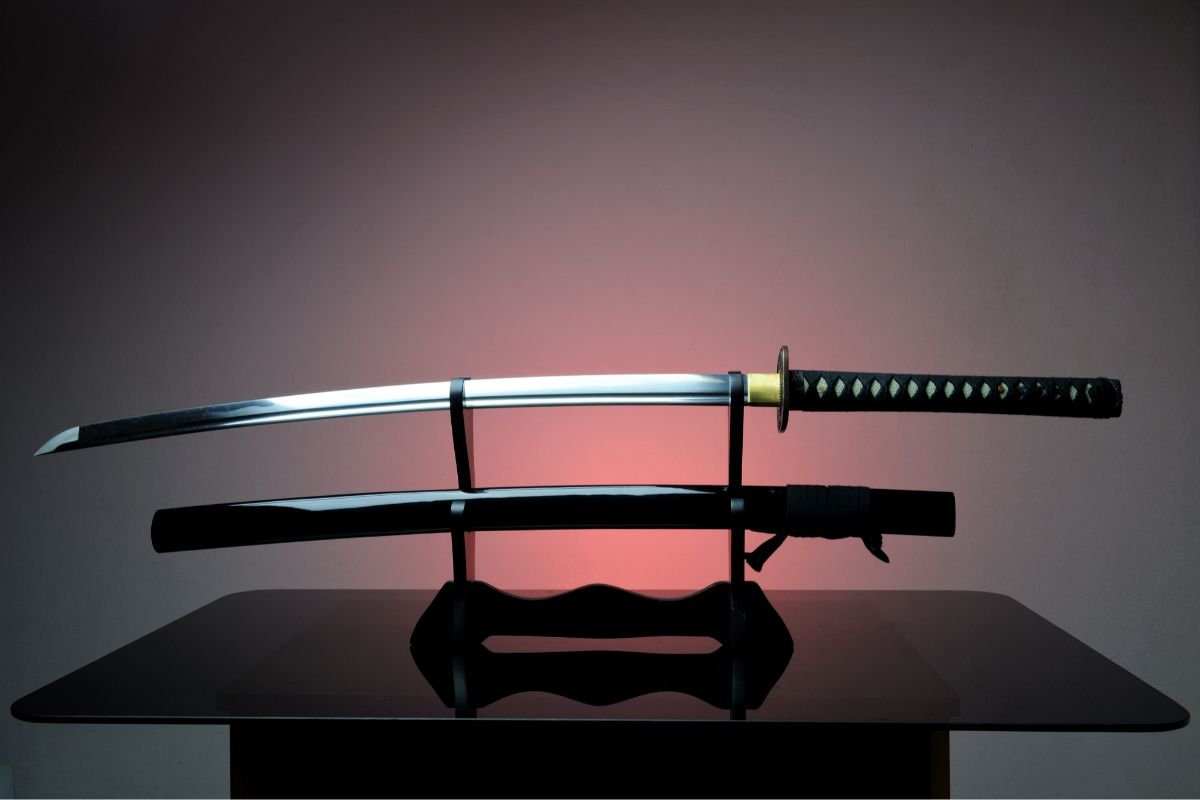
Certainly when people mention Japanese weapons, swords will be one of the first weapons that you think of, and there’s good reason for this.
They have a long history of constructing the most deadly, but also most beautiful and high quality swords. Let’s look at a few now.
The Katana
Undoubtedly, the most popular and ancient Japanese sword is the katana. It has a single-edge and its origins were wholly focussed on samurais. Yes, in the early years – only those of a samurai class were allowed to wield a katana.
In fact, the katana is a symbol of the spirit and the power of the samurai, with the word samurai referring to the most powerful warriors within feudal Japan whose rank was very high in the Edo period.
Indeed, it is one of the most iconic symbols in samurai and Japanese culture and history. It’s relatively long and has a curved, thin single-edged blade. This design allows it to be drawn incredibly quickly.
However, despite all of its positives, it did have one downfall – and that was the fact that it was known to break and damage pretty easily.
Having said that, many manufacturers of the katana continued (and still continue for that matter) to perfect the blade’s strength.
When we compare the katana to Western swords, it is superior in many areas. It’s lighter and shorter, which gives it the edge in terms of speed and can easily be carried. Some katanas can even be easily concealed depending on their length.
Western swords however, especially longswords, were pretty the polar opposite of this. Much longer handle and blade, double edged and without a curve.
Therefore, while they were less likely to break in battle (depending on their construction) they compromise speed.
They also made it more problematic for the wielder to carry it due to their heavy weight.
The Wakizashi
Another Japanese sword that represented the samurai is the wakizashi and this blade first appeared in Japan in the 15th century. It’s a short bladed sword that has many similarities to the katana, but you certainly see the difference in its length.
This sword was traditionally worn by samurais on their left hip, and if they carried both the wakizashi and the katana, this would be known as daisho.
These two swords worked well together as accompaniment, but the wakizashi was preferred for decapitation.
On top of this, the wakizashi is famous for the Japanese suicide ritual of seppuku, which was a way for Japanese samurais to achieve a warrior’s death, but it evolved for other reasons like the avoidance of enemy capture, to mourn another’s death and even as punishment.
This blade received a lot of respect and Japanese warriors never left it behind. When entering another person’s home, the samurai would leave the katana at the door but always bring the wakizashi with them.
The Tanto
Much like the katana, the tanto has been a staple of Japanese weaponry for over a thousand years.
The tanto and the samurai were inseparable and this was both a moniker of respect to the blade, but it also showed the spirit of the warrior.
Despite its small stature and compact design, it is a highly dangerous blade. It has a long, flat blade and a strong center. As a result, it was often used in close combat but also a choice for the ritual of seppuku.
However, it was only samurais who were allowed to do this, because the blade was meant to protect the samurai’s honor and therefore seppuku using the tanto was solely reserved for the samurai.
The Odachi
This blade had a similar design to the katana and despite the fact that they were usually around 100 cm in length, it wasn’t uncommon for them to be between one and two meters.
This was because during the feudal era in Japan, this blade was the choice of the cavalry.
The rationale for its general size was due to the Japanese peoples’ heights. Due to a smaller stature, they would require something more realistic in size.
The Tachi
Finally for Japanese swords, the tachi is an extremely ancient weapon dating back to the Koto period and preceded the creation of the katana – however, the katana and the tachi are very similarly shaped and sized.
However, it’s important to note that the tachi was heavier and longer than the katana. Not only this, but samurais would wear this sword with the cutting edge facing the other way (down for tachi, up for katana).
There were many types of this sword though, each with different lengths. However, the tachi stopped being a popular choice after the creation of the katana.
2. Yumi

Certainly when we talk about Japanese weapons, we cannot overlook the use of the bow and arrow. This combination is known as yumi in Japan.
Yumi was a weaponry choice even before the creation of the katana and historically they were made from pressed bamboo and wood, which gave it longevity and a relatively long life.
Compared to other bows, yumi was much longer and taller – especially if you put it against bows from Western countries. In fact, the length could be around six feet.
Yumi is still included with many Japanese fictional shows and other media such as manga – so many people will already be pretty familiar with this choice of weapon.
3. Kusarigama
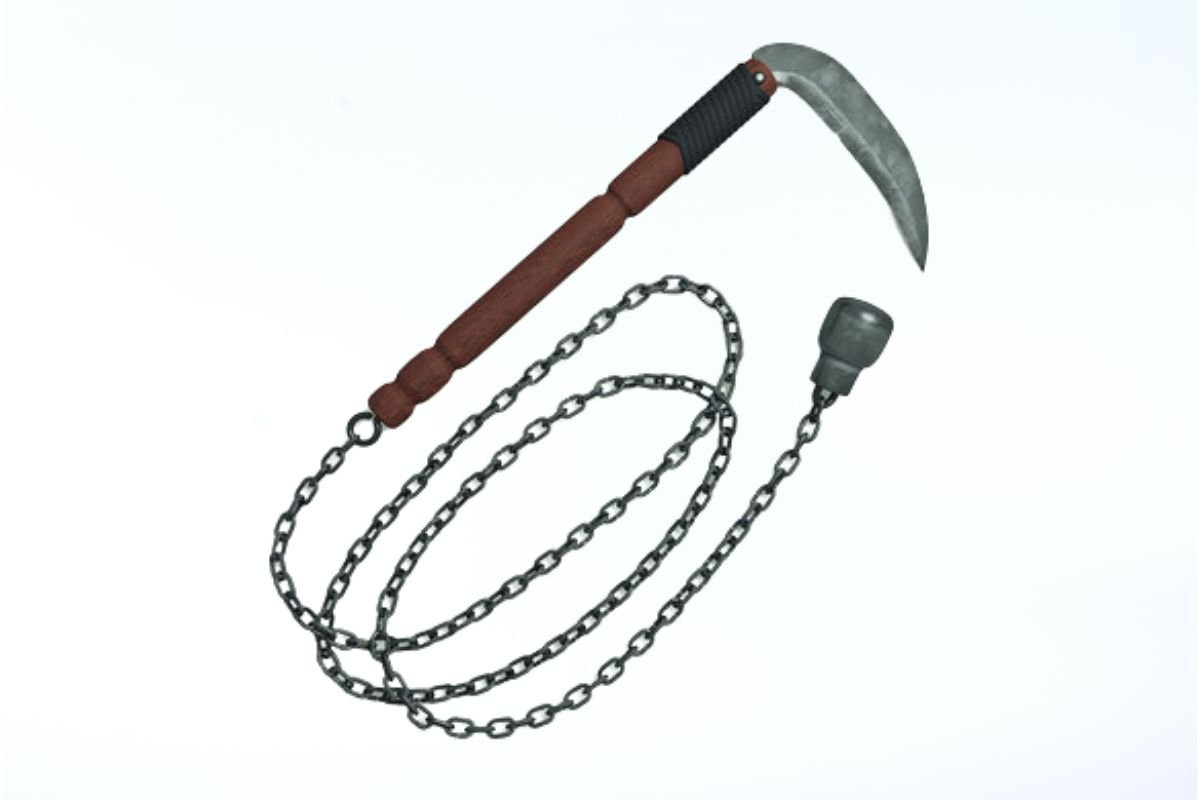
Kusarigama literally means chain-sickle and it first appeared in the country during the Muromachi period. Whilst this weapon could be extremely deadly in battle, it had a significant flaw.
The user would need to “warm it up” by giving it enough rotational speed to strike the opponent. For every single attack, this would be the same requirement.
As a result of this, it was effective but limited – so it would not be the ideal selection for all warriors.
Having said this, normal combat situations would mean this choice could be perfectly acceptable, but as we mentioned – it would not be the perfect all-rounded choice.
4. Shuriken
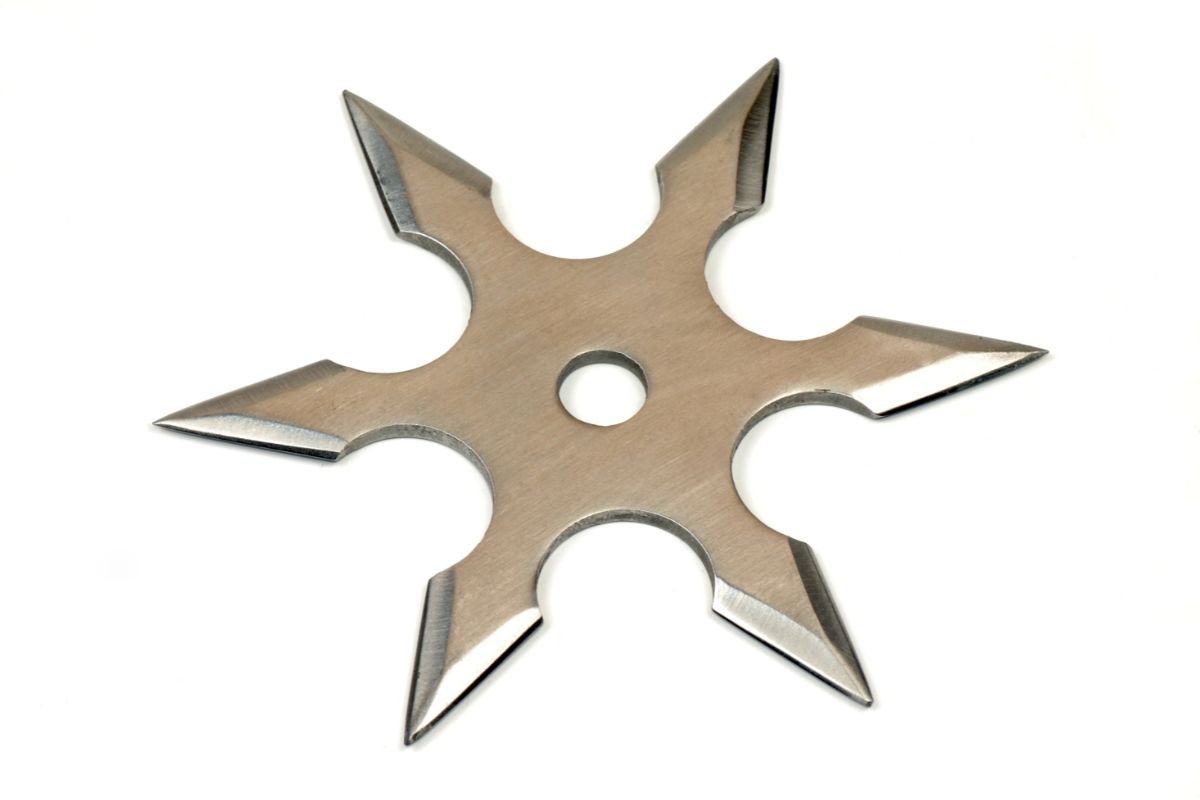
In ancient Japanese culture and history, aside from the samurai, you may also be familiar with the ninja.
These were warriors who were renowned for their stealth and imposed a lot of fear on their potential enemies, and partially this was due to their choice of weapons.
Shuriken is no exception to this. Westerners will know them as ninja stars, and they are a small weapon with a requirement to be launched or poked to the enemy.
They are small, lightweight and incredibly sharp which made them ideal for ninjas and they were very effective. As with some other Japanese weapons, shuriken has been seen on the small screen and big screen for fictional media.
5. Tanegashima
First introduced to the country by the Portuguese during the mid sixteenth century, tanegashima is a type of infantry weapon and arguably is among the most powerful and most deadly in all Japanese history.
In fact, it was used by both samurai class and infantry members alike and it completely transformed the way that Japan approached warfare conditions.
They operated through a matchlock system and over the years, the Japanese reimagined their use and made them much more effective. This is because the gun itself had a lot of drawbacks, which made them useful but time constraining.
This meant that yumi was still much more popular among some samurais – and in no small part this was due to abundance and longevity.
6. Tessen
One of the most unique choices of Japanese weapons is the tessen, which essentially was a type of bladed combat fan.
It had a variety of uses, ranging from hidden, surprise attacks, a way to signal other soldiers or for samurai communication.
There are two types of tessen. The more traditional use is the form that we just spoke about, which is a fan with a wooden frame with blades, whereas the second type is a wide fan that sumo wrestlers still use to this day.
It was relatively rare for this weapon to be used and in reality, it wasn’t anywhere near as effective as other Japanese weaponry. However, it could be useful in some situations, so it still remained a staple.
7. The Yari
If you are thinking that this weapon is more well known among Chinese culture, you’d be right.
The Yari originated from China and appeared originally during the Nara period in Japan – although it was not well known for its use in Japan until the fourteenth century.
Indeed, the Yari is still a traditional weapon to see among depictions of Chinese military figures, but it became widely used among Japanese military much later.
Essentially, it’s a long bladed spear made with bamboo, metal inlays, iron rings and potentially some gemstones. It was great for close combat situations and its use was similar to that of today’s bayonet intention.
8. Nunchaku
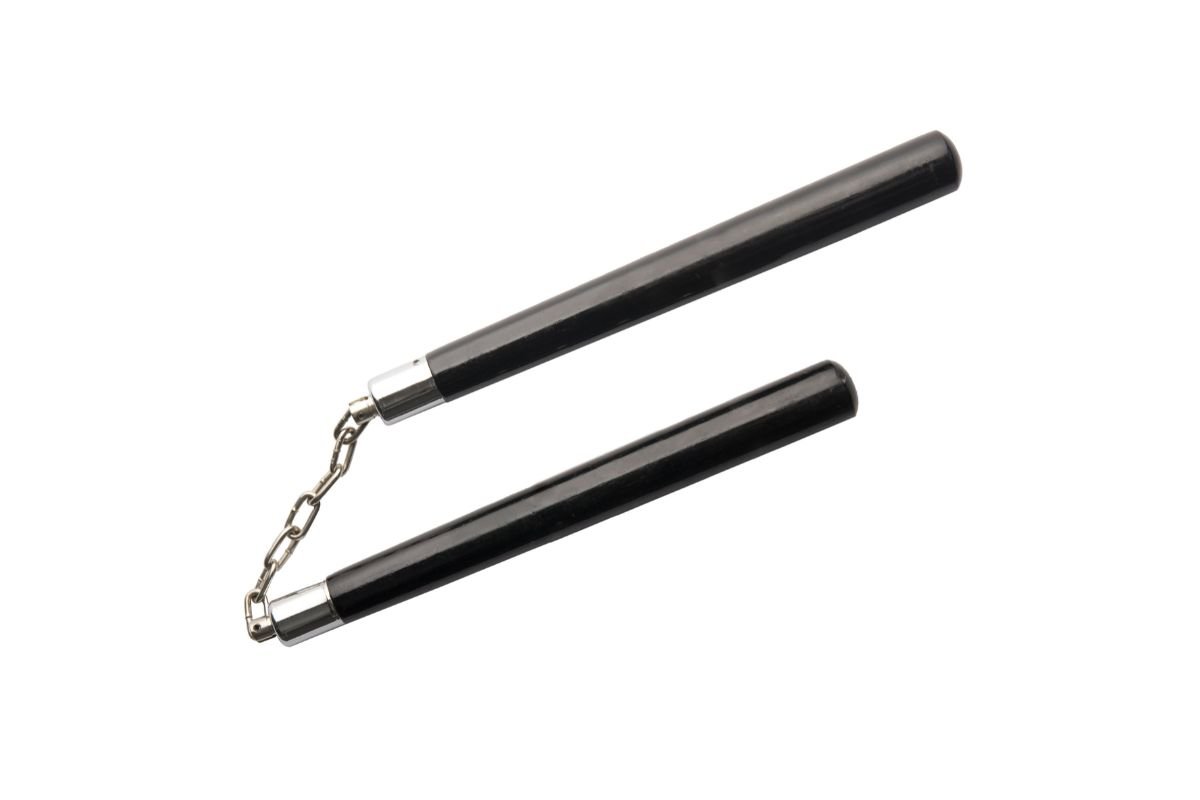
This form of Japanese weapon was likely popularized by Bruce Lee movies, but despite the Chinese national making this weapon much more well known, it originated in Okinawa, Japan.
In fact, the samurai would commonly use this weapon in combat. Its size meant that it was easy to transport and conceal, but it also was very effective for strikes.
It could be used to defend the samurai from enemy attacks, strike an enemy from more of a range than other weapons and it could be used secretly to eliminate the enemy.
9. Fukiyu
One of the greatest forms of attack is when the enemy cannot see it coming, and when we’re dealing with a weapon also known as the “silent killer”, you can be sure of its efficacy.
It is pretty much paper in a funnel shape which uses poisonous arrows or poisoned aluminum needles made in Fukiya.
Due to this choice of attack, many enemies could be struck at either close range or long range and would be unaware for the most part that they had been struck at all.
Within time, they would simply fall foul of the effects from the arrow’s poison.
Not all of these arrows would be poisoned though, but they were certainly the most deadly choice of the two.
Indeed, when enemies began to drop seemingly for no reason, their focus would be shifted – allowing for a perfect time to ambush.
10. Naginata
Finally on our list of Japanese weaponry, we have another spear-like weapon, which was similar to the Chinese swordsman or European blade. The handle was made of wood and the blade was very long.
In ancient times, this was the weapon of choice for female members of the nobility. Despite the fact that they would not be close to the battlefield, they were solely responsible for the defense of their home while the males were fighting.
It is still used today for a Japanese form of fencing. Luckily, the design is a little more stable nowadays, but the modern version of this weapon still holds a lot of similarities to its ancient counterpart.
Notably, the handle is easy to remove, which allows cleaning to be easy and quick, but it also makes things a lot simpler if there are damages or adjustments that need to be addressed.
Frequently Asked Questions
What Weapons Do ONI Use?
ONI use kanabo which is a wooden club with protruding metal spikes. This design makes it extremely dangerous on the battlefield, but it also makes it difficult to transport safely.
Can I Buy These Weapons?
You can purchase some of the weapons we have shown, however it will depend on where you live and their intended housing. You will need to check with your country/state’s laws and regulations.
Do They Still Make These Weapons?
Some of these weapons we’ve included are indeed still being made today and some of them are still being used. Albeit, they might be used differently and designed slightly differently.
Do Samurais Prefer Swords Or Guns?
Even though traditionally we would consider samurais synonymous with the katana, as time progressed, the samurai would prefer to use guns.
What Weapons Were Used In Japan In Modern Conflicts?
Some weapons used in more modern conflicts included things like the Type 26 revolver for close combat use, the model 1 submachine gun for further range along with the Type 99 sniper rifle and even Type 100 flamethrowers.
However, there are a huge number of other weapons to include here, from close range to throwable weapons. Indeed, the Japanese military incorporates a mixture of close combat and long range tactics to fit the situation
Final Thoughts
Japanese weaponry has a long and intriguing history, and as we can see – it’s fascinating to view how culturally significant each weapon is. We hope this guide has been interesting for you!
- What Is a Maiko? - July 13, 2025
- What Does Domo Arigato Mean? - July 12, 2025
- What Does Naruto Mean? - July 12, 2025

